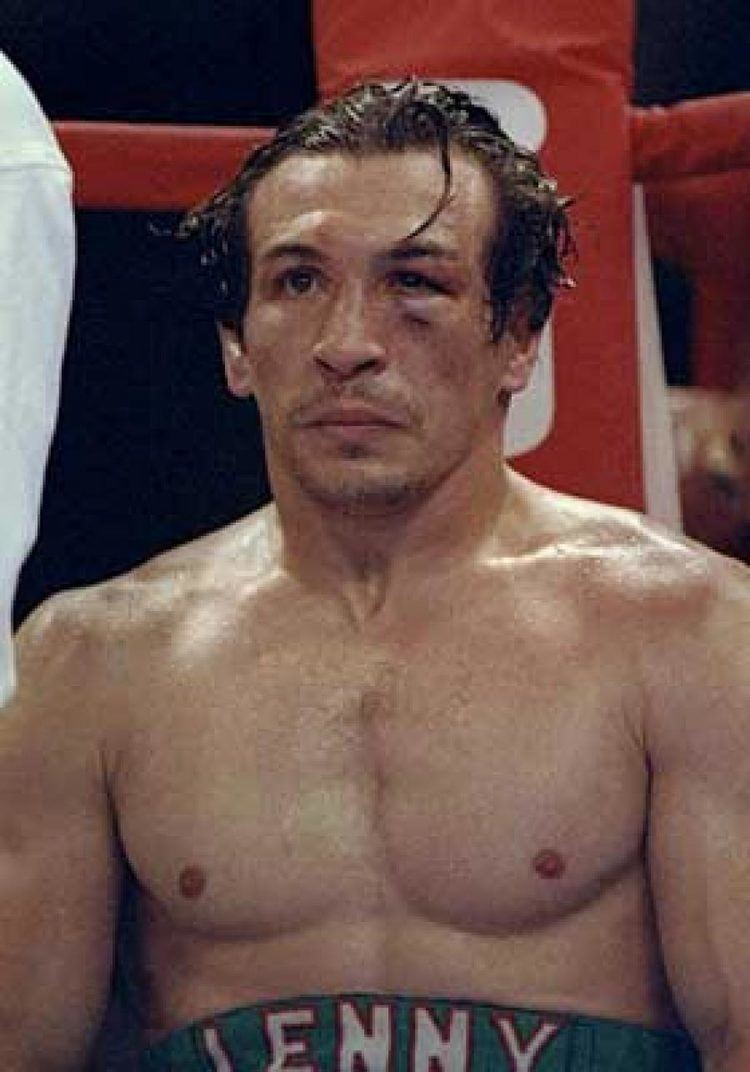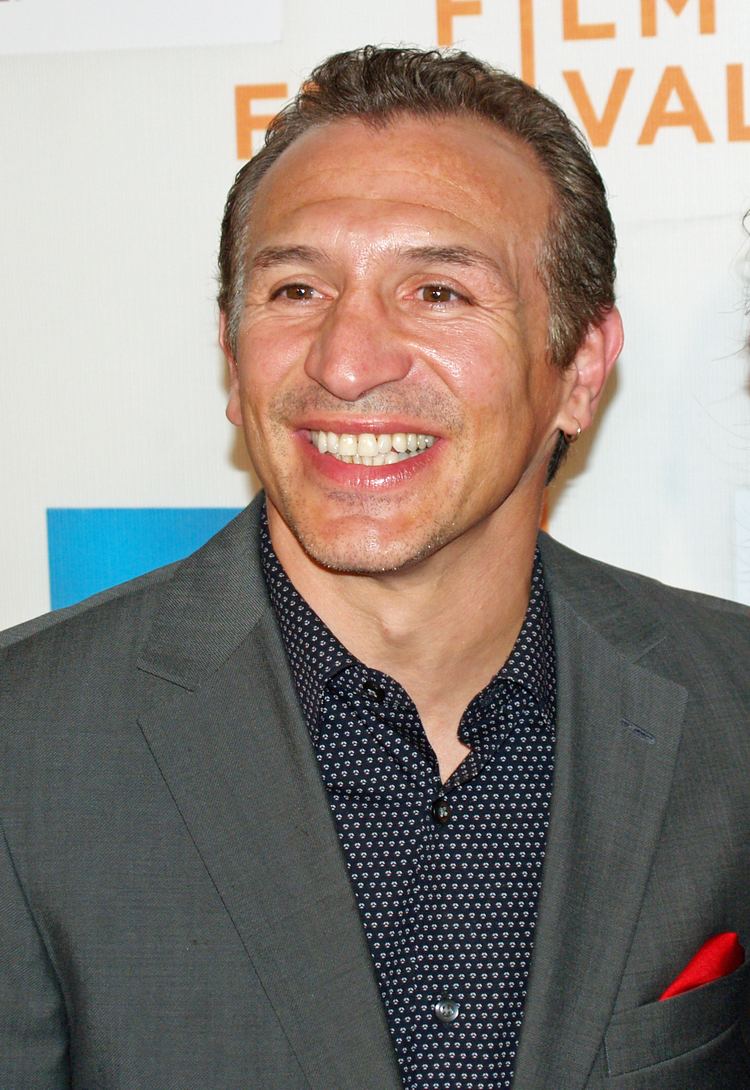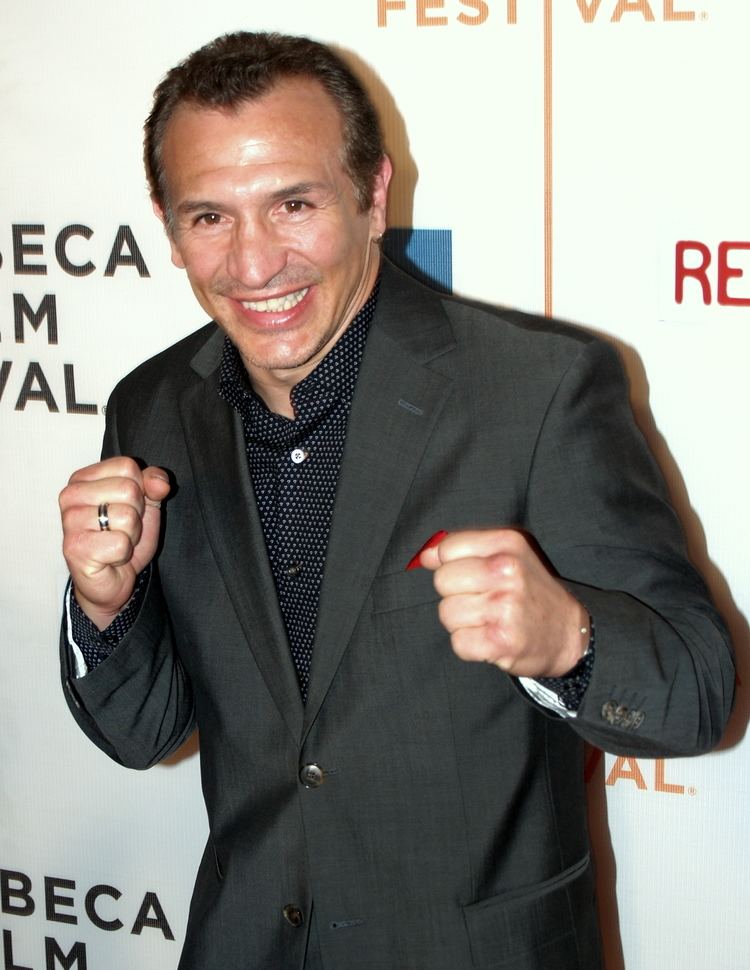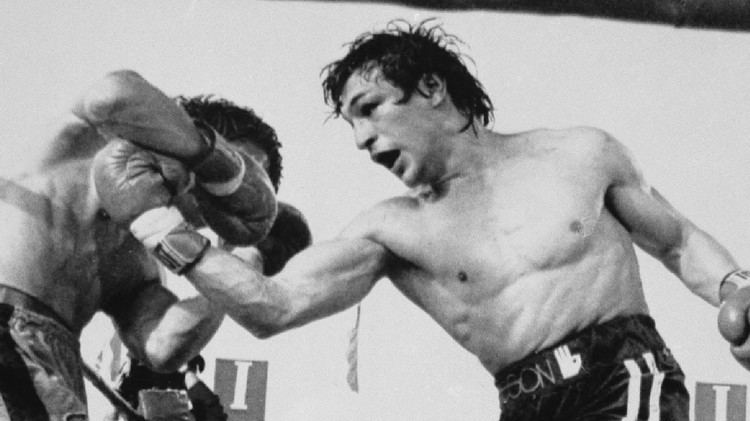Nickname(s) Boom Boom Total fights 34 Weight 64 kg Name Ray Mancini Parents Lenny Mancini | Nationality United States Role Boxer Spouse Tina Rozzi (m. 2014) Height 1.64 m | |
 | ||
Real name Raymond Michael Mancini Movies The Good Son, Redbelt, Deadly Bet, Turn of Faith, The Nail: The Story of Joey N Similar People Kim Duk‑koo, Lenny Mancini, Alexis Arguello, Livingstone Bramble, Hector Camacho | ||
Ray "Boom Boom" Mancini - Highlights & Knockouts
1982-11-13 Ray Mancini vs Duk koo kim
Raymond Michael Mancini (born March 4, 1961), best known as Ray "Boom Boom" Mancini, is an American former professional boxer who competed from 1979 to 1992, and has since worked as an actor. He held the WBA lightweight title from 1982 to 1984. Mancini inherited his distinctive nickname from his father, veteran boxer Lenny "Boom Boom" Mancini, who laid the foundation for his son's career. In 2015, Ray was inducted into the International Boxing Hall of Fame.
Contents
- Ray Boom Boom Mancini Highlights Knockouts
- 1982 11 13 Ray Mancini vs Duk koo kim
- Early life and amateur career
- Professional career
- Lightweight title challenges
- WBA lightweight champion
- Match against Duk Koo Kim
- Later matches
- Retirement and later work
- In other media
- References

Early life and amateur career
Mancini, an Italian American, was born Raymond Michael Mancino in Youngstown, Ohio on March 4, 1961. Boxing played a prominent role in the Mancini family history. Mancini's father, Lenny Mancini (the original "Boom Boom"), was a top-ranked contender during the 1940s. Lenny Mancini's dream, however, was dashed when he was wounded during World War II. Although Lenny Mancini returned to boxing, limitations resulting from his injuries prevented him from fulfilling his potential.

Lenny inspired young Mancini to develop his boxing skills and encouraged him to train at a gym when he was quite young.
Professional career

On October 18, 1979 he made his professional debut by defeating Phil Bowen with a first round knockout. His whirlwind punching style caught the attention of network executives at several American television networks, and he became a regular on their sports programming. During this time Mancini defeated some notable boxers including former United States champion Norman Goins in March 1981.
Lightweight title challenges

On April 30, 1980, Mancini defeated Bobby Sparks with a knockout at 1:28 in the first round for the regional Ohio State Lightweight title. Over a year later on May 16, 1981, Mancini won his first major title by defeating Jorge Morales for the WBC-affiliated NABF Lightweight championship when the referee determined that Morales could not continue after the 9th round. Two months later, he successfully defended the title against Jose Luis Ramirez after a unanimous decision. Mancini's first attempt at a world title came in his next bout on October 3 when he was pitted against Alexis Argüello for his World Boxing Council lightweight title. The event was selected by many (including The Ring and ESPN) as one of the most spectacular fights of the 1980s. Mancini gave Arguello trouble early and built a lead on the scorecards, but Arguello used his experience to his advantage in the later rounds and stopped Mancini in the 14th round.

Mancini would rebound from the loss to Arguello by winning his next two bouts, including a second (and last) successful defense of his NABF Lightweight title against Julio Valdez (10th round TKO) which would earn him another chance at a world title.
WBA lightweight champion
On May 8, 1982, in a match held at The Aladdin in Las Vegas, he challenged the new World Boxing Association lightweight champion, Arturo Frias. Fifteen seconds into the fight, Frias caught Mancini with a left hook to the chin and another combination made Mancini bleed from his eyebrow. Mancini recovered and dropped Frias right in the center of the ring with a combination. Dazed, Frias got back up but Mancini immediately went on the offensive and trapped Frias against the ropes. After many unanswered blows, referee Richard Greene stopped the fight at 2:54 in the first round, and the Mancini family finally had a world champion.
Match against Duk Koo Kim
Mancini's first defense, against former world champion Ernesto España, went smoothly with a Mancini knockout win in the 6th round.
On November 13, 1982, a 21-year-old Mancini met 27-year-old South Korean challenger Duk Koo Kim. Kim had struggled to make the 135lb weight limit, and had to lose several pounds shortly before the fight. The title bout, at Caesars Palace in Las Vegas, was televised live at 1pm PST on CBS Sports. It was, according to many observers, a fight filled with action. Mancini finally won by TKO in the 14th round. Moments after the fight ended, Kim collapsed and fell into a coma, having suffered a subdural hematoma on his brain and died four days later. The week after his death, the cover of Sports Illustrated magazine showed Mancini and Kim battling, under the title "Tragedy in the Ring."
Mancini went to the funeral in South Korea and he fell into a deep depression afterwards. He has said that the hardest moments came when people approached him and asked if he was the boxer who "killed" Duk Koo Kim. Mancini went through a period of reflection, as he blamed himself for Kim's death. In addition, Kim's mother committed suicide three months after the fight, and the bout's referee, Richard Green, killed himself in July 1983.
As a result of this bout, the WBC took steps to shorten its title bouts to a maximum of 12 rounds. The WBA and WBO followed in 1988, and the IBF in 1989.
Later matches
Mancini began the process of getting his life back together by once again putting on gloves. He went to Italy to face British champion George Feeney. Mancini won a 10-round decision.
He defended his title two more times. In January 1984, in a bout with former world champion Bobby Chacon, which was broadcast on HBO, Mancini defeated Chacon after referee Richard Steele stopped the fight in the third round with blood dripping from Chacon's left eye.
In June 1984, Mancini, still recovering from the emotional trauma of Kim's death, fought Livingstone Bramble to retain his title in Buffalo, New York. This time however, Mancini came out on the losing end, defeated after 14 intense rounds. Mancini lost his title, but not before a fierce effort that resulted in an overnight stay at Millard Fillmore Hospital and 71 stitches around one eye.
Mancini returned to the ring twice to attempt to regain his world title. In a rematch with Bramble, Mancini lost the fight by one point on all three judges' scorecards in a 15-round decision. His next attempt came in March 1989, when he lost to Héctor 'Macho' Camacho in a split decision, Mancini had one final fight in April 1992, against former lightweight champion Greg Haugen. Mancini lost when referee Mills Lane stopped the fight in the seventh round.
Retirement and later work
Mancini retired officially in August 1985 at the age of 24. However, he returned to the ring to fight Héctor Camacho in 1989 and had one final fight in 1992. A made-for-television movie based on Mancini's life aired in the 1980s. The former champion was able to keep 75 percent of his $12 million in purse money, which enabled him to pursue a broad range of interests in retirement.
Mancini has a son also called Ray who appears in the YouTube reality series SummerBreak.
Mancini appeared in and produced a handful of films, and became a fight analyst for the Fox reality series Celebrity Boxing. Mancini, who as of 2007 resides in Los Angeles, California, owns the El Campeon Cigar Company and operates two movie production companies.
Mancini practices Brazilian Jiu-Jitsu and holds a purple belt in the martial art. He appeared in David Mamet's MMA film Redbelt.
Mancini produced Youngstown: Still Standing in 2010, which premiered at the 34th Cleveland International Film Festival on March 24. The documentary film featured his hometown friend, actor Ed O'Neill and included Jim Cummings, Kelly Pavlik, Jay Williams, Andrea Wood and Mancini himself, among many other Youngstown natives and locals. John Chechitelli – another Youngstown native – directed and edited the 89-minute-long film. It recounts the history of Youngstown, Ohio from its founding in 1797 to the present.
Mancini is fluent in Italian. He and Orlando Romero reunited in 2013 at Lima, Peru.
